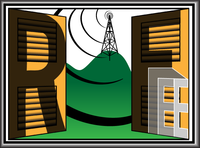Beta Release of Rfree: A User Friendly Tool for Finding Available Frequencies

We are very excited to announce the public launch of the beta version of Rfree, a free and open source software developed by Prometheus Radio Project with support from the Media ideation Fund at ITF and Coast FM. This web-based software offers technical support for Low Power FM (LPFM) applicants.
In order to be eligible to apply for a LPFM license, there must be an available channel in your proposed area of transmission. Rfree will allow you to do a preliminary study of the availability of frequencies in your community and give you further information on the coverage area, interference levels, and spacing to other channels. In other words, you’ll be able to see clearly what’s available on the radio dial and what the possibilities are for potential frequencies in your city or town.
Rfree frequency searches will show users a tri-colored chart of channels that have various levels of FCC application difficulty (Green=easy, yellow=possible, and red=worth another look). As a result, not all available frequencies shown to be available comply with the rules defined by the FCC in the same manner. You may need to work with an engineer to prove that your selected frequency will not cause interference to other existing stations.
Benefits of Rfree:
- Rfree saves the results of users’ frequency searches. Applicants are able to conduct simultaneous studies and compare results.
- Applicants can conduct frequency searches in their cities using a zip code, city, address or coordinates (longitude and latitude).
- Information garnered from Rfree results can be used in the FCC LPFM technical application.
It’s easy to identify available frequencies in your community with Rfree!
Once you have saved your search information, Rfree will show a list of possible frequencies in your community. The results are easy to understand:
Green: There is a frequency available in your community that complies with all the rules and regulations determined by the FCC.
Yellow: Frequencies are available, but applying for them would require you to conduct a basic engineering study to prove that the frequency will not interfere with existing stations.
Red: Frequencies may be available nearby, but the current location does not comply with the FCC rules, so use RFree’s availability for potential locations where the frequency will be yellow or green.
Once you have chosen a frequency, you can save your results and Rfree will provide more specific technical information about your frequency such as:
- HAAT (High Average Above terrain).
- Neighboring Stations on Related Frequencies
- Border Zone
- Nearby AM Stations
- Protected Sites
Maps that will display the areas that your station will cover:
- Coverage area map: Displays the the territory that your station could potentially cover.
- Availability map: Shows areas in red and yellow that are protected by FCC.
- Change of location: In the case that your results show that there is an available frequency in yellow or red, (if the contours/circles in red or yellow cause interference with your contours in blue). Rfree will allow you to adjust your location by dragging the tag on the map. This will allow you to search for more frequencies with ease and find available frequencies in which you will not interfere with existing stations.Once you have modified your search, Rfree will save your changes and display new results.
Tools for Engineers
Rfree provides more advanced tools for engineers which include the ability to explore the channels that may be available with an engineering exhibit. For example, in an area with hilly terrain, the engineer could look at the proposed station's signal strength contours, and show that the proposed station would not interfere with another existing station because their signal near the existing station would be blocked by hills or mountains. The engineer can also adjust the parameters of nearby stations, to see if there are changes another station could make (such as lowering their power or using a different type of antenna) to make space for a new low power station.
Logging into Rfree:
To get started using Rfree users must first create an account on RadioSpark.org, an online portal created by Prometheus Radio Project with the intention of providing guidance and support for applicants of LPFM licenses. Once logged into RadioSpark, users can access Rfree and start their frequency search. You can access through the link in RadioSpark or through our forum discussion.
Because Rfree is linked to users’ RadioSpark account, the software will allow them to save their frequency searches for various locations. Users will be able to retrieve past searches and compare results saved with their profile.
By creating an account on RadioSpark users are making their information available to Prometheus so that we may be able to support applicants throughout the application process. RadioSpark is an open and accessible forum for community radio applicants. Participation will grant applicant groups the opportunity connect with engineers, community radio novices and experts to ask questions, share resources, and connect with allies. Once you have created an RadioSpark account you can access Rfree!
